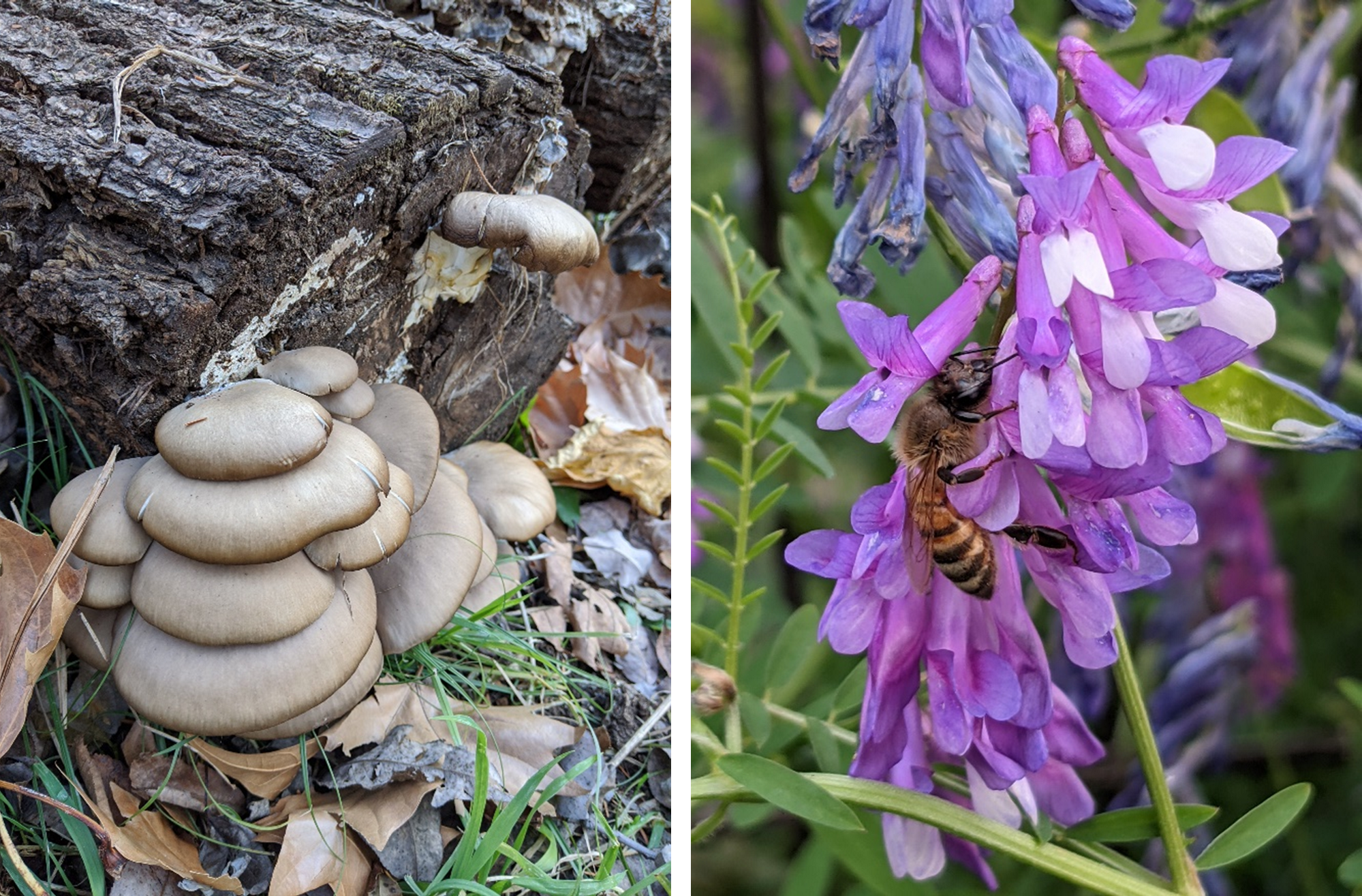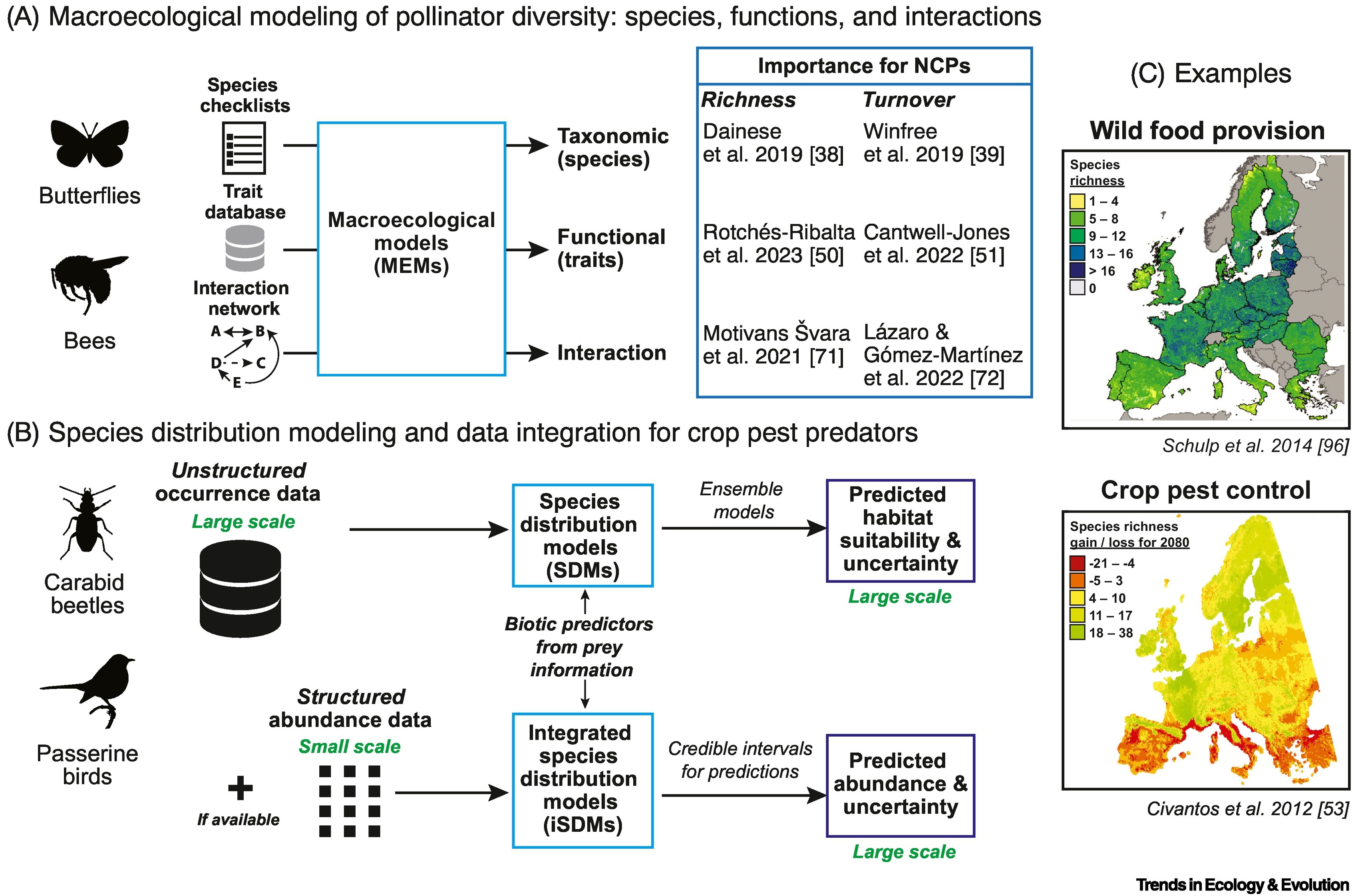People depend on nature in a multitude of ways. Crop pollination, pest management, storm buffering, and carbon capturing are all part of nature’s contributions to people (NCP). But these contributions are subject to change—species that make vital contributions may migrate or even go extinct due to climate change or habitat loss. Forecasting these changes is challenging, but also essential to ensure that humans are adequately prepared to respond.
Part of what makes this so challenging is that current NCP estimates typically rely on data incorporating the physical environment and omit information on species. Given that biodiversity is a cornerstone of NCP, many scientists recognize that biodiversity information can help us better assess the current and future state of NCP.
In a new opinion paper published in Trends in Ecology and Evolution, lead author Jamie M. Kass, associate professor and head of the Macroecology Lab at Tohoku University’s Graduate School of Life Sciences, and an international team of colleagues argue that recent advances in biodiversity modeling and mapping have great potential for improving NCP estimates.
“Modeling and mapping of biodiversity advance at a rapid pace, making it difficult for researchers outside the field to keep up,” points out Kass. “Our paper overviewed the current challenges in predicting NCP and explained how two major biodiversity modeling strategies can help: species distribution models and macroecological models.”
Species distribution models predict species’ range limits and habitat suitability based on environmental variables like climate and land use. Macroecological models also use environmental variables but instead predict biodiversity patterns such as the richness of species in an area or how much ecological communities change across a region.
“In the paper we noted that increased adoption of these modeling strategies could allow for a more reliable assessment of the spatial distribution of NCP, for example, by predicting distributions of service-providing species with high biodiversity likely to be important for NCP,” adds Kass.
To illustrate their point, the authors outlined how multiple advances for these modeling approaches can be employed to predict different dimensions of pollinator diversity, as well as abundance patterns for predators of crop pests and maps of the associated analytical uncertainty.
The authors conclude these advances will help us forecast changes in NCP that human societies rely on and also meet international goals for biodiversity conservation.
The work for this paper was done in partnership with Keiichi Fukaya (National Institute for Environmental Studies, Japan), Wilfried Thuiller (Université Grenoble Alpes, France), and Akira S. Mori (The University of Tokyo).

Edible wild foods like oyster mushrooms (left) and pollination provided by bees (right) are two examples of nature's contributions to people whose distributions can be predicted using biodiversity models. ©Keiichi Fukaya

Example workflows that utilize advances in biodiversity modeling to predict nature’s contributions to people (NCP) linked to species and ecological communities. ©Trend in Ecology & Evolution
Publication Details:
Title: Biodiversity modeling advances will improve predictions of nature’s contributions to people
Authors: Jamie M. Kass, Keiichi Fukaya, Wilfried Thuiller, Akira S. Mori
Journal: Trends in Ecology and Evolution
DOI: https://doi.org/10.1016/j.tree.2023.10.011
Authors: Jamie M. Kass, Keiichi Fukaya, Wilfried Thuiller, Akira S. Mori
Journal: Trends in Ecology and Evolution
DOI: https://doi.org/10.1016/j.tree.2023.10.011
Contact
Name: Jamie M. Kass
Affiliation: Tohoku University
Email: kass@tohoku.ac.jp
Website: https://www.lifesci.tohoku.ac.jp/en/research/fields/laboratory.html?id=45417
Twitter: ndimhypervol
Affiliation: Tohoku University
Email: kass@tohoku.ac.jp
Website: https://www.lifesci.tohoku.ac.jp/en/research/fields/laboratory.html?id=45417
Twitter: ndimhypervol

